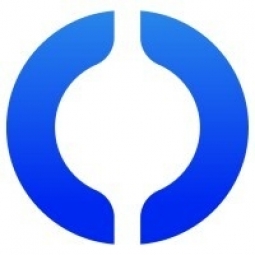Fishbowl® Helps Prince Michel Flow from Crisis Management to Informed Pricing, Production Planning, and Sales Fulfillment

Customer Company Size
SME
Region
- America
Country
- United States
Product
- Fishbowl Manufacturing
Tech Stack
- QuickBooks
Implementation Scale
- Enterprise-wide Deployment
Impact Metrics
- Cost Savings
- Productivity Improvements
Technology Category
- Functional Applications - Inventory Management Systems
- Functional Applications - Manufacturing Execution Systems (MES)
Applicable Industries
- Food & Beverage
Applicable Functions
- Discrete Manufacturing
- Procurement
Use Cases
- Inventory Management
- Supply Chain Visibility
Services
- System Integration
About The Customer
Prince Michel Vineyard & Winery is one of Virginia’s oldest and largest wine producers. Established in 1982, the company's headquarters contains a manufacturing facility as well as a retail tasting room and gift shop. On average, roughly 300,000 bottles of wine are produced annually. The company was purchased by the present owners in mid-2005. After two years of frustration with the information being presented by QuickBooks, in late 2007 the owners brought in a new chief financial officer (CFO) to address the situation.
The Challenge
Prince Michel Vineyard & Winery, one of Virginia’s oldest and largest wine producers, was facing significant challenges with its existing systems. The company was using QuickBooks, which was inadequate for their needs, particularly in managing multiple warehouses and bill of materials. The company was also facing procedural problems, such as all manufacturing inventories being expensed upon purchase, then looped back to cost of manufacture at a later date. This practice, along with other workarounds and estimates, resulted in meaningful financial statements but only months after the year was over. The company was also struggling with inventory accuracy, stockouts, and the inability to produce timely, accurate cost-to-manufacture information in-house.
The Solution
In early 2008, the company's new CFO issued a request for proposal to approximately 10 commercial software vendors. After reviewing the capabilities of various providers, it was determined that the right solution would be QuickBooks linked to Fishbowl Manufacturing. The bills of materials are constructed with a combination of inventoried items and standard overheads, thereby determining cost to manufacture as soon as the work is complete. The ability to use multiple warehouses, both physical and logical, has been perfect for improving inventory accuracy. Fishbowl was implemented without hiring a consultant and with relatively little training.
Operational Impact
Quantitative Benefit

Case Study missing?
Start adding your own!
Register with your work email and create a new case study profile for your business.
Related Case Studies.

Case Study
The Kellogg Company
Kellogg keeps a close eye on its trade spend, analyzing large volumes of data and running complex simulations to predict which promotional activities will be the most effective. Kellogg needed to decrease the trade spend but its traditional relational database on premises could not keep up with the pace of demand.

Case Study
HEINEKEN Uses the Cloud to Reach 10.5 Million Consumers
For 2012 campaign, the Bond promotion, it planned to launch the campaign at the same time everywhere on the planet. That created unprecedented challenges for HEINEKEN—nowhere more so than in its technology operation. The primary digital content for the campaign was a 100-megabyte movie that had to play flawlessly for millions of viewers worldwide. After all, Bond never fails. No one was going to tolerate a technology failure that might bruise his brand.Previously, HEINEKEN had supported digital media at its outsourced datacenter. But that datacenter lacked the computing resources HEINEKEN needed, and building them—especially to support peak traffic that would total millions of simultaneous hits—would have been both time-consuming and expensive. Nor would it have provided the geographic reach that HEINEKEN needed to minimize latency worldwide.

Case Study
Energy Management System at Sugar Industry
The company wanted to use the information from the system to claim under the renewable energy certificate scheme. The benefit to the company under the renewable energy certificates is Rs 75 million a year. To enable the above, an end-to-end solution for load monitoring, consumption monitoring, online data monitoring, automatic meter data acquisition which can be exported to SAP and other applications is required.

Case Study
Coca Cola Swaziland Conco Case Study
Coco Cola Swaziland, South Africa would like to find a solution that would enable the following results: - Reduce energy consumption by 20% in one year. - Formulate a series of strategic initiatives that would enlist the commitment of corporate management and create employee awareness while helping meet departmental targets and investing in tools that assist with energy management. - Formulate a series of tactical initiatives that would optimize energy usage on the shop floor. These would include charging forklifts and running cold rooms only during off-peak periods, running the dust extractors only during working hours and basing lights and air-conditioning on someone’s presence. - Increase visibility into the factory and other processes. - Enable limited, non-intrusive control functions for certain processes.

Case Study
Temperature Monitoring for Restaurant Food Storage
When it came to implementing a solution, Mr. Nesbitt had an idea of what functionality that he wanted. Although not mandated by Health Canada, Mr. Nesbitt wanted to ensure quality control issues met the highest possible standards as part of his commitment to top-of-class food services. This wish list included an easy-to use temperature-monitoring system that could provide a visible display of the temperatures of all of his refrigerators and freezers, including historical information so that he could review the performance of his equipment. It also had to provide alert notification (but email alerts and SMS text message alerts) to alert key staff in the event that a cooling system was exceeding pre-set warning limits.

Case Study
Coca-Cola Refreshments, U.S.
Coca-Cola Refreshments owns and manages Coca-Cola branded refrigerators in retail establishments. Legacy systems were used to locate equipment information by logging onto multiple servers which took up to 8 hours to update information on 30-40 units. The company had no overall visibility into equipment status or maintenance history.






